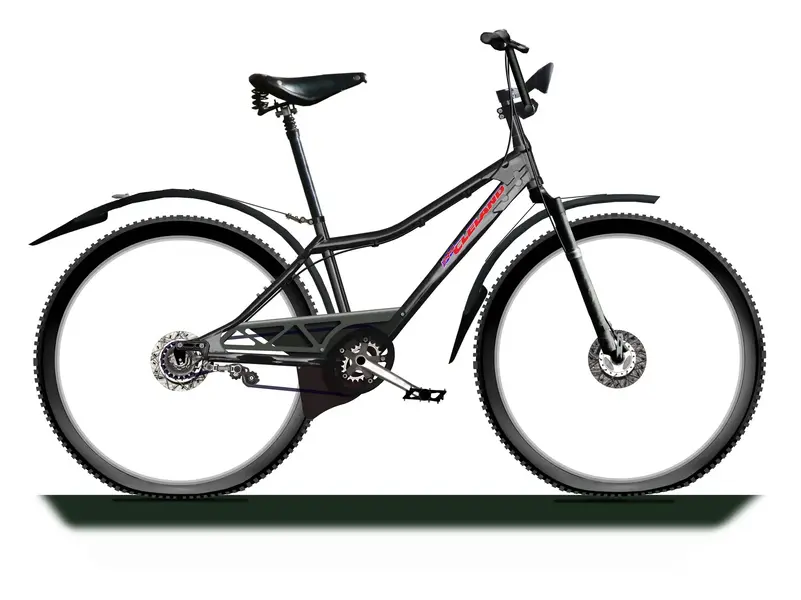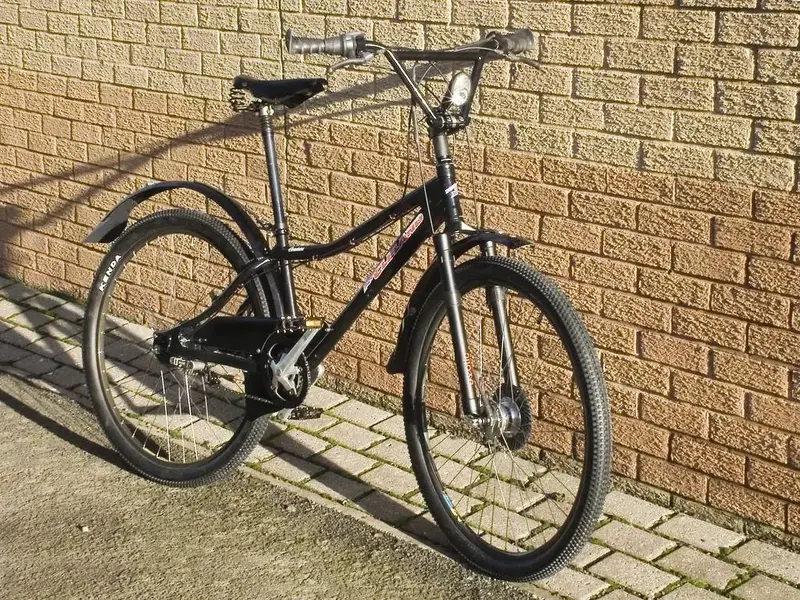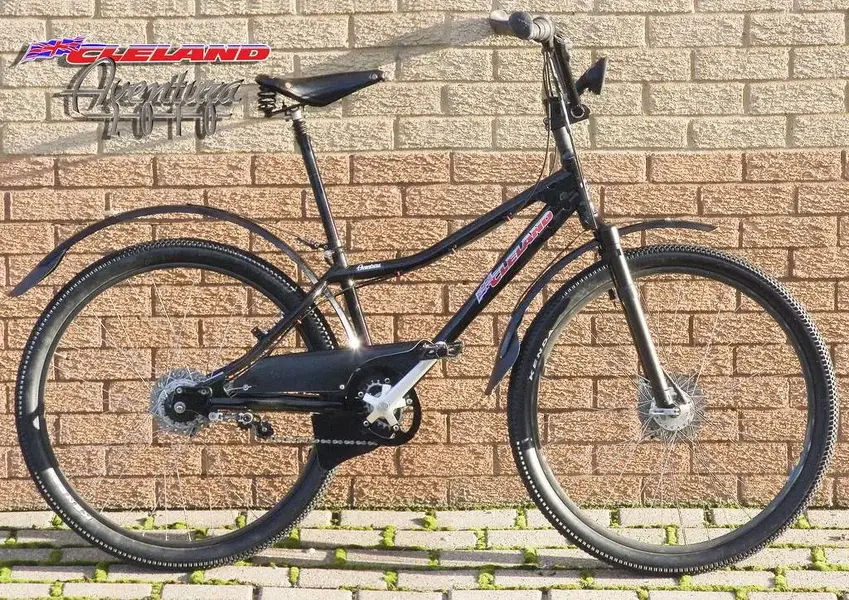GrahamJohnWallace said:I shot the video in 1080p High Definition, so need find a way of reducing the resolution and file size to one that can be posted online.
YouTube converts for you:
http://www.google.com/support/youtube/b ... 2&hl=en-US
If you're short of bandwidth, drop me a PM and we'll work out how to get it on-line somehow.
Dr. Matt...
You are using an out of date browser. It may not display this or other websites correctly.
You should upgrade or use an alternative browser.
You should upgrade or use an alternative browser.
Egg chainrings, who remembers them?
- Thread starter mattbrown
- Start date
Hope you're able to get the video in utube, or, apparently, vimeo allows higher definition uploads.
Can't wait to see it.
Demonstrations will be expected on the Cleland Birthday Ride (Dec 6th) this year, when I'll be riding my latest design bike. Would I be allowed to attach a picture of it here if it's so new, even thought the concept is (relatively) old?
Can't wait to see it.
Demonstrations will be expected on the Cleland Birthday Ride (Dec 6th) this year, when I'll be riding my latest design bike. Would I be allowed to attach a picture of it here if it's so new, even thought the concept is (relatively) old?
GeoffApps":2hx9ilj0 said:Demonstrations will be expected on the Cleland Birthday Ride (Dec 6th) this year, when I'll be riding my latest design bike. Would I be allowed to attach a picture of it here if it's so new, even thought the concept is (relatively) old?
I for one would be very interested to see it. What's new about it? Would like to know where your ideas are going these days.
Okey dokey, here it is.
This is a virtual image, created by photographing each component, resizing it to life-size and placing it in the main picture (which is now up to 955MB and two metres long!).
It's then relatively easy to design the drop-outs, chainguard and bashplate, and know they'll fit.
That's in two dimensions, anyway. One day I'll master cadcam.
Sorry it's so big, perhaps someone in the moderating department can reduce it? Or perhaps they'll leave it in its full detailed glory?
This is a virtual image, created by photographing each component, resizing it to life-size and placing it in the main picture (which is now up to 955MB and two metres long!).
It's then relatively easy to design the drop-outs, chainguard and bashplate, and know they'll fit.
That's in two dimensions, anyway. One day I'll master cadcam.
Sorry it's so big, perhaps someone in the moderating department can reduce it? Or perhaps they'll leave it in its full detailed glory?
Attachments
GeoffApps":1u13r2gf said:Okey dokey, here it is.
Is that an off-the-shelf frame, or something you've designed and had built for yourself?
Nearly all the components are off-the-shelf, so replicas are almost viable, if not necessarily profitable!
The frame is a 'Brand X Scratch' from CRC.
It's very strong and a bit on the heavy side by today's standards, but I'm hoping it'll give that lovely solid feedback you get with heavier, stronger machines.
The frame is designed for fat 24" wheels or thinner 26" ones. I'm getting laser-cut stainless dropouts made to take 29" X 2.1" wheels.
The frame is a 'Brand X Scratch' from CRC.
It's very strong and a bit on the heavy side by today's standards, but I'm hoping it'll give that lovely solid feedback you get with heavier, stronger machines.
The frame is designed for fat 24" wheels or thinner 26" ones. I'm getting laser-cut stainless dropouts made to take 29" X 2.1" wheels.
- Feedback
- View
By comparing the relative efficiencies of walking and running you can get a reasonable understanding of how an EggRing can be more efficient than the equivalent round chain ring. When you run you waste energy as the walking motion is more energy efficient than running. Riding a round ring on the flat is energy efficient but becomes less so as resistance forces (hills, mud , headwinds etc.) increase. This is because the bike decelerates as the pedals pass through the dead-spots, and then needs to regain its speed on the power-stroke. An elliptical chain-ring will spend less time going through the dead-spot and so the bike will have less time to decelerate. So like walking EggRings can reduce the energy needed to get from A to B. Instead of spinning the round gear in order to make sure you have enough momentum to get you through the next dead-spot. The EggRing can be turned slowly but with much less danger of it not getting to the next power-stroke.
Does this have a use?
Well not to win races. Unless the course is so extreme that the riders repeatedly exhaust themselves and have to take rests.
However the elliptical granny ring on my daughters bike does mean that she has stopped whinging about how steep the hills are and now perseveres in riding slowly up to the top. Not the stuff of racing legend but it does have the potential of encouraging more people to ride bikes.
Does this have a use?
Well not to win races. Unless the course is so extreme that the riders repeatedly exhaust themselves and have to take rests.
However the elliptical granny ring on my daughters bike does mean that she has stopped whinging about how steep the hills are and now perseveres in riding slowly up to the top. Not the stuff of racing legend but it does have the potential of encouraging more people to ride bikes.
GeoffApps":29es9lo7 said:Okey dokey, here it is.
This is a virtual image, created by photographing each component, resizing it to life-size and placing it in the main picture (which is now up to 955MB and two metres long!).
It's then relatively easy to design the drop-outs, chainguard and bashplate, and know they'll fit.
That's in two dimensions, anyway. One day I'll master cadcam.
Sorry it's so big, perhaps someone in the moderating department can reduce it? Or perhaps they'll leave it in its full detailed glory?
VERY interesting bike, Geoff.
And a wonderful approach to DIY CAD!
It has some similarities to bikes that I've built for off-road, for touring, and surviving months of winter commuting in ice and snow: 29er wheels, USE suspension post, Brooks saddle, BMX bars, low standover height, heads-up position, weatherproof brakes and drivetrain, mud-guards etc. etc.
But not all features of the same bike at the same time, so I have no photos that would reflect a coherent concept, as your Cleland does.
With MTBers recently experimenting with different wheel sizes, swept back "alt" (alternative) bars, hub-gears etc. I think maybe your design ideas are better-placed for some recognition now than in the past. Particularly among long-distance riders, self-supported 24-hour races, 29er riders and other people who have found there's more to off-road riding than "racing geometry" and counting the grams on a bike that looks the same as everybody else's and is designed to meet a marketing ideal rather than real-world conditions.
DM":218evau2 said:... there's more to off-road riding than "racing geometry" and counting the grams on a bike that looks the same as everybody else's and is designed to meet a marketing ideal rather than real-world conditions.
Hear, hear...!
- Feedback
- View
The Cleland - Twenty Ten in the flesh 
It rides like a good classic Cleland or Highpath. But the brakes and gears are much more refined. The lower crossbar makes the high bottom bracket seem less intimidating, especially when you need to bale out in a hurry.
It rides like a good classic Cleland or Highpath. But the brakes and gears are much more refined. The lower crossbar makes the high bottom bracket seem less intimidating, especially when you need to bale out in a hurry.
Attachments
Similar threads
- Replies
- 5
- Views
- 504
- Replies
- 0
- Views
- 204


